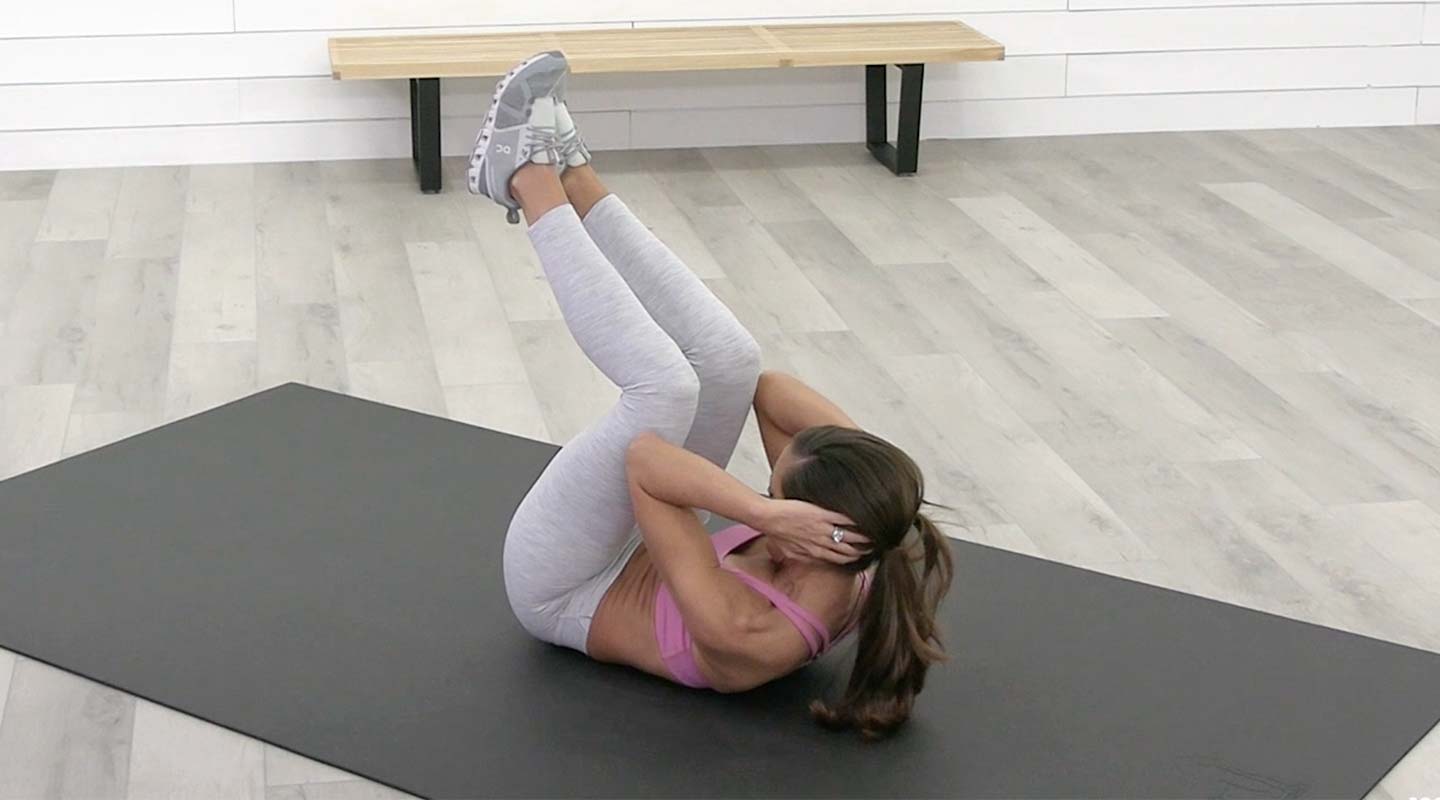 We diet, we run, and we crunch our way to what we hope will be our pre-mommy tummies. With all the effort we put into cinching up the loose skin and/or trying to shed those last few stubborn pounds that are hanging around our midsections, do you ever stop and wonder if you’re taking the proper steps? Or are you just wasting time searching for that slender waist?
We diet, we run, and we crunch our way to what we hope will be our pre-mommy tummies. With all the effort we put into cinching up the loose skin and/or trying to shed those last few stubborn pounds that are hanging around our midsections, do you ever stop and wonder if you’re taking the proper steps? Or are you just wasting time searching for that slender waist?
Before you attempt one ab workout too many, check out four common ab myths — and their busters — below:
Somewhat true, somewhat false. Whenever you work any muscle, you subject it to microtrauma. Microtrauma is simply the tearing of the muscle fibers, which leads to inflammation and repair. This is a good thing!
Generally toning exercises are recommended every other day, with at least one recovery day in between. Here’s why – muscles need recovery time. This recovery time is when the benefits occur. Through the process – working a muscle past it’s previous condition & giving that muscle 2-3 days to repair – the benefit is healthier muscle tissue. Depending on the intensity of your workout, those particular muscles worked during a strength training session need anywhere from one to three days to recover in-between workouts. Your abs are no exception to this rule. If you train your entire core every day, you run the risk of injury due to overuse.
However, the caveat is neuromuscular training…creating healthy pathways through brain to muscle connection. Because certain exercises that recruit your TA are crucial to the functionality of your core, as well as your posture, you can do these more often. Exercises such as Arm Switches, Bent Knee Fall Outs, Dead Bug Switch, and Quadruped TA Bracing can be done several times a week and even on consecutive days.
Check out these 4 TRANSVERSE ABDOMINIS EXERCISES. >>
False! Although it would be a highly sought-after skill, unfortunately, spot reduction is a myth. Our bodies are one complete system. We cannot target one area while ignoring the other areas — our bodies need a comprehensive approach including cardio, strength, and flexibility.
Think of your body’s energy systems as a gas tank. We can’t decide where the energy comes from in the gas tank. As Paul Chek stated in the C.H.E.K. Institute’s publication, the Scientific Core Conditioning Series, “There is no direct metabolic pathway from the muscle cells in your midsection to the fat cells surrounding them. For the abdominal muscles to use stored fat for energy, your body must first send it to the liver. The liver converts this fat into fatty acids and sends it back to the abdominal muscles to be used as fuel. Unfortunately, the stored fat the abdominal muscles use first may not be from the abdominal region. This is because your body uses its fat stores such that the last place you added fat to is the first place you will lose it.”
Research also shows that how and where you lose weight is genetically determined. So, you have to look to your family tree to see how your own body type stacks up. Additionally, your sex determines how and where you lose weight. Due to hormonal differences, women tend to store more fat around the pelvis, buttocks and thighs, where men gain weight around their bellies.
This is partially true! You can do all of the planks, taps, lifts, and crunches that you want; however, if you aren’t eating nutritionally dense foods, a layer of fat around your mid-section and may conceal those strong ab muscles underneath. Additionally, some foods may cause bloating (cruciferous vegetables, legumes, and dairy are common culprits), which can also make it more difficult to see the results of your hard work.
On the flip side, if you eat well but do not exercise, you are missing all of the great benefits of exercise. You cannot create healthy abs without core exercises. You have to stress muscles past their previous condition to see a change.
False! As children, we often rolled our eyes when an adult told us to stand up straight, but there was some truth to their prodding. Think about it: We devote approximately 30 minutes a day to working out, while we spend 12 hours sitting and/or standing. This lengthy time spent in these static positions is important. Sitting with poor posture for prolonged periods of time can wreak havoc on your hips and lower back. But, if you add a little bit of tension in your low abs by contracting them while sitting, it can help to ease the pressure on your back. In order to fully engage your abdominals, and in particular your transverse abdominis, you have to pull your navel in toward your spine without shifting the pelvis. This engages the TA while also working the other muscles that run along your spine.
In a perfectly myth-driven world, we could spot comprehensive workout program and some tried-and-true consistency.
Looking for a comprehensive core program that balances everything we’ve talked about here? Check out Core Program in the Moms Into Fitness Studio.